Victor Hasson MD



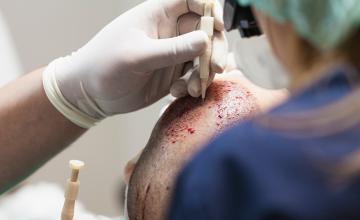
The Ultimate in fullness and naturalness in one surgery session.
We’ve all seen the “pluggy” hair transplants of the past. But we don’t see today’s state of the art hair transplants because they go unnoticed.



Plugs Mini Micros Follicular Units
Surgical hair restoration has dramatically evolved from the big round “plug” grafts of the 1960 ’s and 70’s, to the “mini micrografts” of the 80’s and early 90’s, to modern hair transplant procedures using entirely follicular unit grafts .
Now hair restoration surgery is going through another important evolution that is improving both the naturalness and fullness that can be achieved from any one surgical hair transplant session.
Today ’s micro surgical blades, like the size of hair grafts, have become ever smaller and now enable hair transplant surgeons to safely make more tiny graft incisions in a given area then ever before. Surgeons are then able to “dense pack” select areas with as many as 40 to 60 follicular unit grafts per square centimeter. This graft density is as much as twice that of the standard follicular unit hair transplant procedure.
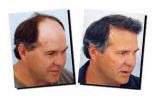
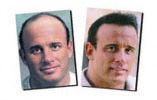
Such high densities of transplanted hair typically produce the appearance of fullness even after only one surgical session. Patients also experience rapid healing and no visible skin distortions due to the tiny size of these incisions.
Ultra refined follicular unit grafting raises the bar for physicians and their staff. This delicate and demanding hair transplant procedure requires more skill and careful attention to be performed properly. The smaller and more tightly packed incisions require more closely dissected follicular unit grafts that are carefully trimmed under microscopes. These small and densely packed incisions are also more difficult to place the grafts into.
This procedure also requires more careful patient selection, as “dense packing” of grafts is not appropriate for all patients.
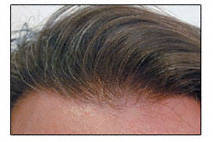
In the hands of a highly skilled physician and staff the Ultra refined follicular unit hair transplant procedure can achieve excellent new hair growth that is so natural that it is undetectable even under close scrutiny.
While the standard micro “follicular unit” hair transplant does produce natural looking results, its ability to achieve high density in only one surgical session is limited. Thus patients may have to do subsequent surgical sessions in a transplanted area to achieve a full look.
The many patient benefits of this new procedure are significant and include:
 All members of the Coalition of Independent Hair Restoration Physiciansare required to perform ultra refined grafting with excellent results. Learn more about the membership standards.
All members of the Coalition of Independent Hair Restoration Physiciansare required to perform ultra refined grafting with excellent results. Learn more about the membership standards.
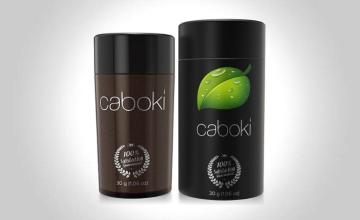
For many hair loss suffering men and women, topical concealers are a necessary aspect of the "daily routine." Usually composed of hair shaft adhering microfibers or darkening cream, concealers help balding men and women both camouflage areas of noticeable baldness and increase the apparent density of thinning hair. Below, we provide our readers with a product review of the new and popular hair loss concealer Caboki.
Caboki was released back in 2005 but is only just now receiving more attention, most likely due to increased advertising. Like others before it, Caboki concealer claims to be a "hair loss breakthrough". Despite ambitious promises, Caboki's claims leave several unanswered questions: is Caboki really a breakthrough concealer? How does it compare to other, similar products like Toppik, DermMatch and COUVre? Is Caboki a worthwhile product for purchasing, or will it fall from grace like other alleged "breakthrough" hair loss miracles before it?
While many products, such as "Toppik" (a popular microfiber-style concealer) and "Couvre" (a concealing cream) are popular and trusted within the hair loss community, new, unproven concealers arrive on the market every day. What's more, many of these new concealers try to "best" the products currently offered and claim to camouflage hair loss in a way "never seen before." However, as with many alleged miracle cures, these products often fail to meet expectations and leave hair loss sufferers disappointed and discouraged. So let's explore how Caboki works to conceal hair loss below.
Caboki is comprised of a series of charged microfibers that, when applied to the scalp, tightly bind hair shafts and create a denser, fuller appearance. According to the manufacturer, these microfibers are comprised of two different elements: Moroccan Gossypium Herbaceum fiber and iron oxide-based natural (mineral-based) colorants. The makers of Caboki claim these elements allow the product to create a natural, healthy appearance, capable of withstanding harsh lighting conditions, sweat, wind, and rain.
However, because these elements have been used in other concealer products (Toppik particles, for example, are both charged and made from natural keratin), Caboki still must demonstrate why it's revolutionary. So, what makes Caboki a "hair loss breakthrough?" According to the manufactures, Caboki differs from other concealers in the following ways:
So, it's now clear why the manufacturers of Caboki believe it is a superior product, but does this mean Caboki is a legitimate hair loss concealer? Does it truly outshine other concealer product currently on the market?
While the product is still fairly new, most anecdotal experiences and testimonials from real hair loss suffering men and women are positive. Most individuals believe the negatively charged Caboki particles bind strongly to the positively charged hair shafts and create a longer-lasting increase in density. Furthermore, the particles seem to be more resistant to potentially damaging elements like water, sweat, and wind. Having said that, many individuals report some common problems experienced with other concealer products – concealer wiping off on pillows and clothes, some smearing with sweat, and difficultly creating a natural appearance in the hairline. However, these same individuals claim the problems occur less frequently with Caboki. Altogether, it's likely that Caboki is both a helpful hair loss concealer and equivalent to other products currently on the market. While it is clear that Caboki does possess some advantages and interesting claims, it could be difficult to quantify whether it truly exceeds or simply meets the standard set by other available hair loss concealers. Truthfully, only time and the opinion of hair loss sufferers will determine whether Caboki lives up to its claims and defines itself as a legitimate concealer breakthrough.

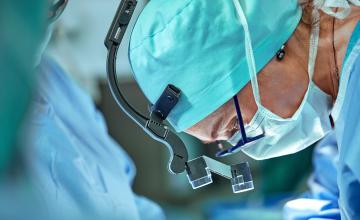
Currently the only solution for regrowing hair, particularly in the hairline area, is hair transplant surgery, an advanced surgical hair restoration technique.
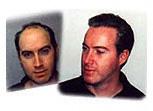
Done right, a hair transplant is so natural that even a hair stylist cannot detect that a person has had hair transplants.

The days of the "corn row" or "Barbie Doll" hair transplants are long gone.
To achieve such truly natural results requires a dedicated and highly skilled staff doing a state of the art hair transplant procedure. The state of the art micro hair transplant procedure that our member physicians perform is called "Ultra Refined Follicular Unit Hair Transplantation".
Hair transplant surgery involves relocating (transplanting) the bald resistant hair follicles from the back of the head to the balding areas on the top and front of the head.
This process is effective and will last a lifetime because the hair follicles taken from the back of the head are genetically resistant to baldness, no matter where they are transplanted.
This procedure is regarded by most hair restoration physicians to be the "gold standard in hair transplants". Learn more about this hair transplant procedure.
Because this very refined procedure is difficult to perform at the highest quality level only a minority of all hair restoration surgeons perform it successfully. Our member physicians have extensive experience performing this advanced and very refined procedure with excellent proven results.
Today, hair transplant surgical hair restoration is an out-patient procedure requiring only local anesthesia. Most patients are surprised by how little discomfort they experience during and after their surgery. Many patients watch TV or sleep during their procedure.
Hair transplant surgery is the only certain way of restoring significant amounts of hair in balding areas. View hair transplant photos of actual hair loss patients.
Sharing information in the Hair Loss Learning Center forum with patients who have successfully restored their hair is a good way to begin the process of selecting a hair transplant surgeon with a proven record of restoring a natural hairline. Online consultation can put you directly in touch with one of the world's top hair restoration physicians in your area who can help you assess your options.
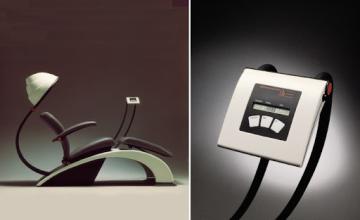
ElectroTrichoGenesis (ETG), also known as Cosmetic TrichoGenesis (CTG), is a little known hair loss treatment that makes some very lofty hair growth claims. How does ETG work and is it really clinically proven to treat androgenic alopecia(genetic balding)?
ETG is promoted as a safe, painless and non-intrusive. Treatment is administered via an “ergonomically shaped couch with a semi spherical hood” manufactured by Current Technology Corporation in Vancouver, Canada.
The patient reclines on the chair and the hood (with disposable liner) is placed over the head but does not make contact with the scalp. This special hood contains electrodes that deliver “specified pulsed electrostatic energy” delivered passively to the scalp by the low-level electric field generated within it.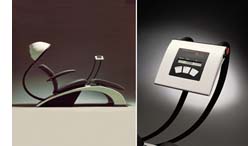
ETG is believed to stimulate the regrowth of hair through the positive influence of the pulsed electrostatic field it generates. This field is said to stimulate “changes within the hair bulge and the follicle, stabilizing hair loss and stimulating new hair growth”. Patients receive a single 12 minute session weekly.
The following three studies on the efficacy of ElectroTrichoGenesis (ETG) as a treatment for thinning hair have been published in peer-reviewed journals:
Maddin, W. Stuart; Bell, Peter W.; James, John H. M. (1990).
"The Biological Effects of a Pulsed Electrostatic Field with Specific Reference to Hair Electrotrichogenesis". International Journal of Dermatology29(6): 446–450.Benjamin, Benji; Ziginskas, Danute; Harman, John; Meakin, Timothy (2002).
"Pulsed electrostatic fields (ETG) to reduce hair loss in women undergoing chemotherapy for breast carcinoma: A pilot study". Psycho-Oncology11(3): 244–248Maddin, WS; Amara, I; Sollecito, WA (1992).
"Electrotrichogenesis: further evidence of efficacy and safety on extended use". International Journal of Dermatology31(12): 878–80
According to the 36-week comparative, controlled study conducted on male subjects at the University of British Columbia and published in The International Journal of Dermatology, 96.7% of those treated experienced cessation of hair loss and/or hair regrowth. Decreased hair loss was seen as early as 4 to 6 weeks but many patients required more time for results.
The pilot study conducted on women undergoing chemotherapy for breast carcinoma and published in Psycho-Oncology,showed that twelve out of 13 participants had good hair retention throughout the chemotherapy period and afterwards with no reported side effects.
As with the clinically proven medical hair loss treatments Rogaine (minoxidil) and Propecia (finasteride), ETG is said to be most effective in the early stages of balding.
Although the data put forth in this article seems to paint ETG as a clinically proven and highly effective hair loss treatment, it’s important to note that the procedure is not new. The studies referenced above were published more than 13 years ago. If ETG truly works to stimulate hair growth and suppress the advancement of hair loss, why has it not become a fixture in the world’s leading hair restoration clinics? Where are all the glowing, unbiased reviews?
With no reported side effects, there may be no harm in giving ETG a try if there is a provider in your area and the fees are reasonable. However, balding men and women are encouraged to consult with an experienced and reputable hair restoration physicianin order to diagnose the cause of their thinning hair and learn about the outstanding medical and surgical options available today.
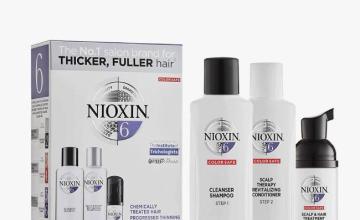
Nioxin is an excellent product including both a shampoo and conditioner formulated specifically for men and women with thinning hair."> While neither the shampoo nor conditioner hasn't been proven to have any effects on DHT (the hormone responsible for male pattern baldness); Nioxin's ability to strengthen follicles and energize cellular activity can improve the overall health of your scalp and hair. Nioxin therefore may have the ability to delay the effects of hair loss. For best results, use both the shampoo (refered to as Nioxxin Shampoo Scalp Cleanser) and conditioner (referred to as Nioxin Scalp Therapy) in conjunction with one another.
Nioxin Scalp Cleanser's cooling properties refreshes and cools the scalp promoting maximum cleanliness and freshness. Because of this, Nioxin shampoo, especially when combined with the conditioner also significantly reduces scalp itchiness and tenderness after hair transplant surgeryin both the recipient and donor areas.
Nioxin Scalp Therapy is an excellent volumizing scalp and hair conditioner that moisturizes and improves your hairs' natural resilience, while promoting a healthy scalp environment for optimal hair growth. Nioxin Conditioner is the perfect conclusion to the Nioxin Shampoo Scalp Cleanser.
Nioxin Scalp Therapy's minty fresh cooling sensation literally refreshes and cools the scalp promoting maximum cleanliness and freshness. Because of this, Nioxin also significantly reduces scalp itchiness and tenderness after hair transplant surgery in both the recipient and donor areas.
We strongly recommend using Nizoral shampooevery 2 or 3 days in conjunction with Nioxin. Its active ingredient ketoconazoleat 2% concentration has proven to be a moderate DHT inhibitor and has growth properties approximately as effective as Rogaine2%.
Men and women sometimes suffer from hair loss for different reasons. Thus, diagnosing its cause is necessary to facilitate and promote proper treatment.
The Nioxin product line is an excellent scalp and hair cleansing shampoo and conditioning therapy but is not proven to stop hair loss. Thus, we strongly recommend using Nioxin in conjunction with the "Big 3" (Propecia, Rogaine, and Nizoral.
To date, only surgical hair restoration is proven to grow hair in completely bald areas. You are invited to have a
Nioxin Shampoo Scalp Cleanser: AQUA/EAU/WATER, TEA-LAURYL SULFATE, SODIUM LAURETH SULFATE, COCAMIDOPROPYL BETAINE, HYDROXYPROPYLTRIMONIUM HONEY, COCAMIDE MEA, PEG-150 DISTEARATE, PANTHENOL, GLYCOPROTEINS, POLY-SORBATE-60, POLYSORBATE-80, CYSTINE BIS-PG-PROPYL SILANETRIOL, HYDROLYZED KERATIN, ACETAMIDE MEA, PROPYLENE GLYCOL, ETHOXYDIGLYCOL, DIMETHYL ISOSORBIDE, COENZYME A, PANTOTHENIC ACID, PYRIDOXINE, CYANOCOBALAMIN, BIOTIN, FOLIC ACID, NIACIN, THIAMINE HCl, UBIQUINONE, ACHILLEA MILLEFOLIUM, ANTHEMIS NOBILIS, CAMELLIA SINENSIS, CITRUS GRANDIS, EQUISETUM ARVENSE, HUMULUS LUPULUS, MELISSA OFFICINALIS, MENTHA PIPERITA, PRUNUS AFRICANA, ROSMARINUS OFFICINALIS, SALVIA OFFICINALIS, SERENOA SERRULATA, SYMPHYTUM OFFICINALE, TARAXACUM OFFICINALE, THYMUS VULGARIS, URTICA DIOICA, SACCHAROMYCES LYSATE EXTRACT, PHOSPHOLIPIDS, SACCHAROMYCES/COPPER FERMENT, SACCHAROMYCES/IRON FERMENT, SACCHAROMYCES/MAGNESIUM FERMENT, SACCHAROMYCES/SILICON FERMENT, SACCHAROMYCES/ZINC FERMENT, PEG-23M, MELANIN, CITRIC ACID, SODIUM CHLORIDE, TETRASODIUM EDTA, DISODIUM EDTA-COPPER, SUPEROXIDE DISMUTASE, CI 42090/BLUE 1, PHENOXYETHANOL, METHYLPARABEN, PROPYLPARABEN, METHYLISOTHIAZOLINONE.
Nioxin Scalp Therapy: AQUA/EAU/WATER, CETRIMONIUM CHLORIDE, CETYL ALCOHOL, DICETYLDIMONIUM CHLORIDE, AMODI-METHICONE, TRIDECETH-12, LAURAMINE OXIDE, GLYCOPROTEINS, DIMETHICONE, SODIUM PCA, CYSTINE BIS-PG-PROPYL SILANETRIOL, PANTHENOL, POLYQUATERNIUM-11, ACHILLEA MILLEFOLIUM, ANTHEMIS NOBILIS, ARCTIUM MAJUS, CALEN-DULA OFFICINALIS, CAMELLIA SINENSIS, EQUISETUM ARVENSE, FRANGULA ALNUS, GERANIUM MACULATUM, HUMULUSLUPULUS, JUGLANS REGIA, LARREA DIVARICATA, MELISSA OFFICINALIS, MENTHA PIPERITA, PRUNUS AFRICANA, QUASSIA AMARA, ROSMARINUS OFFICINALIS, SALVIA OFFICINALIS, SERENOA SERRULATA, SYMPHYTUM OFFICINALE, TARAXACUM OFFICINALE, THYMUS VULGARIS, URTICA DIOICA, YUCCA FILAMENTOSA, PHOSPHOLIPIDS, DIMETHYL ISOSORBIDE, CETEARYL ALCOHOL, ETHOXYDIGLYCOL, CETEARETH-20, PROPYLENE GLYCOL, SACCHAROMYCES LYSATE EXTRACT, COENZYME A, PANTOTHENIC ACID, PYRIDOXINE, CYANOCOBALAMIN, BIOTIN, FOLIC ACID, NIACIN, THIAMINE HCl, UBIQUINONE, SACCHAROMYCES/COPPER FERMENT, SACCHAROMYCES/IRON FERMENT, SACCHAROMYCES/MAGNESIUM FERMENT, SACCHARO-MYCES/SILICON FERMENT, SACCHAROMYCES/ZINC FERMENT, MELANIN, TRIETHANOLAMINE, SUPEROXIDE DISMUTASE, CI 42090/BLUE 1, PHENOXYETHANOL, METHYLPARABEN, PROPYLPARABEN, METHYLISOTHIAZOLINONE.


As you see yourself balding, while others retain their hair, you may ask - why me?
The basic answer is – your hair loss is due to your genetic make up. Your thinning hair is not due to anything you have done, whether wearing too many hats, washing your hair too much or too little or any other hair loss myths. Alopecia or hair loss is primarily genetic and is referred to as "Androgenetic Alopecia" in the medical community.
Your hair's future is largely determined before you're even born. Your follicles have been genetically programmed as to when, where and how much baldness (if any), you'll experience in your lifetime. But the fate of your hair can be altered or compensated for with modern hair loss treatments.
Baldness is largely the result of certain hormones interacting over time with those hair follicles that are vulnerable to their effects.
Both men and women produce "male" hormones. The three most common are testosterone, androsteinedione, and dihydrotestosterone (DHT). Hair follicles, as well as the sebaceous glands, contain high levels of an enzyme called 5-alpha-reductase. This enzyme converts testosterone into DHT, via the blood. DHT is the source of most male pattern balding.
In some people, their follicles on the top of the head are genetically vulnerable to baldness. Over time, these genetically vulnerable follicles are acted upon by the hormone DHT. This hormone binds with the receptor sites of these vulnerable follicles and cause the hair follicle to weaken over time. Propecia is a drug that has been shown to slow the creation of DHT and can be helpful in slowing, stopping or in some cases, reversing hair loss when it is used early enough.
Hair grows naturally in cycles of approximately 3 to 8 years. At the end of the growth cycle, the hair shaft is shed from the follicle and a new hair grows. With thinning hair or balding, each successive growth cycle is shorter and the hair produced is thinner and finer. This is called 'miniturization'.
Men and women don't go bald overnight, it is a slow progression of thinning hair and hair loss that eventually produces baldness. In many cases, the balding has progressed to such a stage that hair loss treatment products aren't enough to reverse the balding process.
Few treatments have the dramatic effect of restoring hair like hair restoration surgery. Click here to learn more about hair restoration.
Not all hair loss is permanent. There are many causes of temporary hair loss that can be treated with diet, stress reduction and a visit to your doctor. Click here to learn about other causes of hair loss.
And rogenetic Alopecia, commonly referred to as 'genetic balding', is the main cause of male and female hair loss. This genetic 'programming' accounts for 95% of male hair loss.
For baldness to occur three factors need to be present:
1.The presence of and rogens, or male hormones.
2. A genetic pre-disposition to balding.
3. Time for the DHT to degrade the vulnerable hair follicles.
While they comprise less than ten percent of permanent hair loss, there are several other Causes of Hair Loss like stress, nutrition, health, age and hormones, that can cause temporary as well as permanent hair loss.
There are also several categories of treatments for hair loss which include drugs, topical lotions, hair care products, hair replacement systems and hair restoration surgery. To learn more about each, please visit our Hair Loss Treatment section.